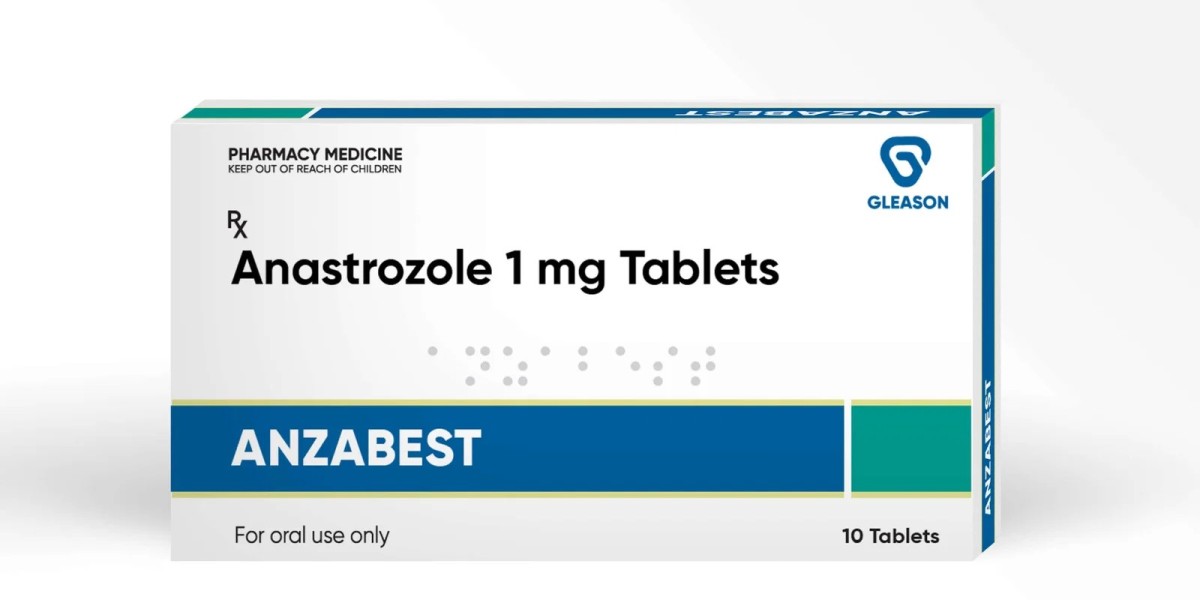Introduction to Anzabest Tablet
Anzabest Tablet is a widely prescribed medication for the treatment of breast cancer, specifically hormone receptor-positive breast cancer in postmenopausal women. It contains Anastrozole, an aromatase inhibitor that reduces estrogen levels in the body, slowing down or stopping the growth of cancer cells.
This article provides detailed insights into Anzabest Tablet, including its uses, dosage, side effects, precautions, and interactions. Understanding this medication is crucial for patients undergoing breast cancer treatment and healthcare professionals managing their care.
How Anzabest Tablet Works
Anzabest Tablet contains Anastrozole, which works by inhibiting the enzyme aromatase. This enzyme is responsible for converting androgens into estrogen. Since certain types of breast cancer rely on estrogen to grow, reducing estrogen levels helps prevent the progression of the disease.
Uses of Anzabest Tablet
Anzabest Tablet is primarily used for:
Treating early-stage breast cancer in postmenopausal women following surgery or radiation therapy.
Managing advanced or metastatic breast cancer in cases where other treatments, such as tamoxifen, have failed.
Preventing recurrence of breast cancer in high-risk postmenopausal women.
Dosage and Administration
Recommended Dosage
The usual dosage for Anzabest Tablet is one 1 mg tablet per day, taken orally.
It is advisable to take the medication at the same time each day to maintain consistent blood levels.
How to Take It
Swallow the tablet whole with water.
It can be taken with or without food.
Do not crush or chew the tablet.
Duration of Treatment
Treatment duration depends on the severity of the condition and doctor’s recommendations.
Typically, it is prescribed for five years in early-stage breast cancer treatment.
Side Effects of Anzabest Tablet
Like any medication, Anzabest Tablet can cause side effects. Some of the most common ones include:
Common Side Effects
Hot flashes
Weakness and fatigue
Joint and muscle pain
Nausea
Headaches
Osteoporosis or bone thinning
Serious Side Effects
Severe allergic reactions (swelling of the face, lips, or throat, difficulty breathing)
Liver problems (yellowing of the skin or eyes, dark urine)
Increased risk of fractures due to bone density loss
Increased cholesterol levels
Precautions and Warnings
Who Should Not Take Anzabest Tablet?
Pregnant or breastfeeding women should not take Anzabest, as it may cause harm to the baby.
Pre-menopausal women should avoid this medication since it is specifically designed for postmenopausal breast cancer.
Patients with severe liver disease should consult a doctor before use.
Individuals allergic to Anastrozole should not take this medication.
Precautionary Measures
Monitor bone health regularly, as Anastrozole can lead to osteoporosis.
Regular cholesterol checks are recommended, as it can elevate cholesterol levels.
Do not stop taking the medication abruptly without consulting a doctor.
Drug Interactions
Anzabest Tablet can interact with certain medications, which may alter its effectiveness or increase side effects.
Medications to Avoid
Estrogen-containing therapies (such as hormone replacement therapy) can counteract the effects of Anzabest.
Tamoxifen should not be taken with Anastrozole, as it reduces its efficacy.
Certain osteoporosis medications, such as bisphosphonates, may require dose adjustments when taken alongside Anzabest.
Lifestyle and Dietary Recommendations
Dietary Considerations
Increase calcium and vitamin D intake to support bone health.
Limit alcohol consumption, as excessive drinking can increase side effects.
Eat a balanced diet rich in vegetables, fruits, and lean proteins.
Lifestyle Changes
Regular weight-bearing exercises (such as walking or resistance training) can help maintain bone strength.
Maintain a healthy weight, as obesity can worsen side effects.
Avoid smoking, as it can increase the risk of osteoporosis and cardiovascular issues.







